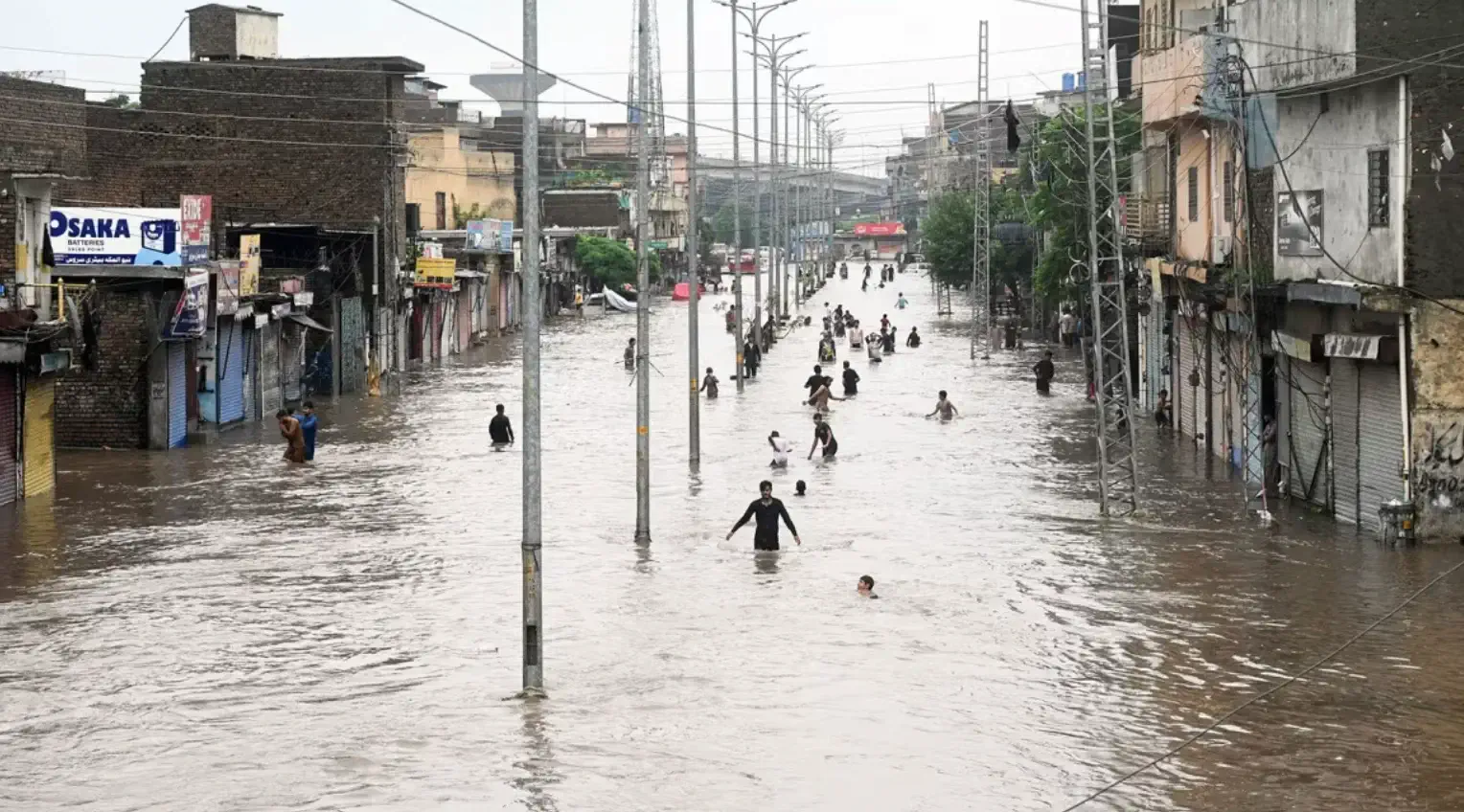(Credit: Anadolu/Getty Images)
In 2025, Asia once again became the forefront of climate-driven flooding, with deadly recent events striking Nepal and Pakistan. According to United Nations Office for Disaster Risk Reduction (UNDRR), most flood-related deaths and economic losses are recorded in Asia.
Nepal Flood
On 8 July 2025, a mountain river swollen by intense monsoon rains swept away the main bridge connecting Nepal and China, leaving 20 people missing, according to Nepali authorities (Associated Press). The flooding of the Bhotekoshi River destroyed the Friendship Bridge at Rasuwagadi, located 120 kilometres north of Kathmandu. At least 55 people have been rescued, while several houses and trucks waiting at the border for customs inspections were also washed away.
Pakistan Flood
This happened right after the Northern Pakistan Flash Foods that persisted for 10 days, killing at least 72 people and injured more than 130.
According to AP, emergency services have been on maximum alert after 17 tourists from the same family were swept away by the Swat River in the northwest. Videos circulating online of the family, stranded on a rooftop and pleading for help, sparked outrage and accusations of slow response by emergency crews.
Singapore’s Approach to Flood Resilience
In contrast, Singapore adopts a proactive, system-wide approach to flood management. According to a report by the Public Utilities Board (PUB), the “Source-Pathway-Receptor” model is used to manage stormwater at its source, along drainage pathways, and in flood-prone areas. Developers, property owners, and town councils are responsible for maintaining on-site drainage and flood protection measures, supported by PUB inspections and public education.
Engineering firm Short Elliott Hendrickson (SEH) also recommends updating building codes, conducting vulnerability analyses, using GIS tools, and implementing targeted mitigation projects.
Risk Leaders’ Perspectives on Flood Preparedness
Chee Kiong Kock, Senior Risk Consultant, AXA XL, and Ranitea Teng, Natural Hazards and Analytics Services Manager, AXA XL, emphasise that robust weather monitoring, multi-channel early warning systems, and predictive analytics are critical to improving forecast-to-evacuation protocols, especially in remote or mountainous regions. For rescue efforts to be rapid and coordinated, they recommend staged monitoring plans, pre-positioning supplies, engaging local volunteers, and conducting regular drills.
“Organisations should conduct vulnerability assessments to identify weaknesses in existing infrastructure exposed to heavy rainfall and flooding.”
Both experts also highlight the value of community engagement, integrating local knowledge into corporate flood risk strategies, enhancing the understanding of flood behaviour and fostering shared preparedness and coordinated response efforts.
Lastly, they caution that the recent flood events have shown that even areas outside of known flood zones can be heavily impacted by extreme flooding, underscoring the need for adaptive and flexible plans.
Prepare for the Storm, But Not Predict Its Arrival
While nature cannot be controlled, preparedness can be. As Singapore’s model shows, forward-thinking, integrated planning, which is backed by clear accountability, can make a crucial difference. For risk managers across the region, the challenge is not only to respond, but to anticipate, adapt and invest in resilience before the next storm arrives.






